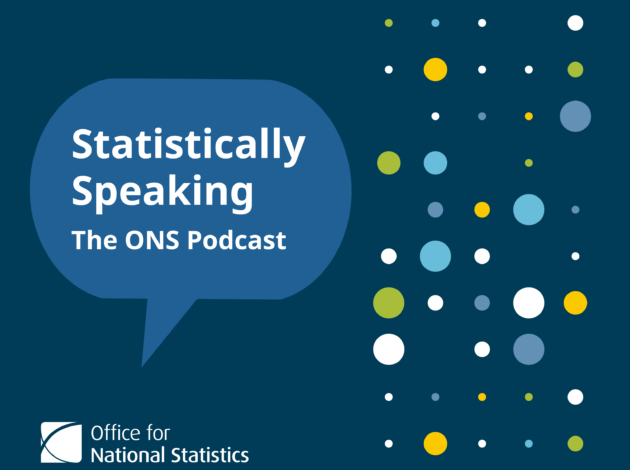One population – five billion statistics

One year on from Census Day, and the most comprehensive quality assurance ever of census data in England and Wales is underway. This is to ensure the Office for National Statistics produces the best possible information for every local area. Here Pete Benton describes the scale of the work, puts a figure on the number of statistics he estimates will be published – and even admits to getting a reminder letter during his own data collection operation.
This time last year we were asking every household in England and Wales to fill out their census questionnaire to reflect who was living in their home on Census Day and the census in Scotland is currently in full swing. Today we’ve released the second episode of the new ONS podcast Statistically Speaking in which I describe running this mammoth task which some people compare to standing up the London Olympics. Listen here to the episode which also includes a fascinating account of how one of our Community Advisers, Sanjay Jagatia, found his experience of working with Indian communities life changing.
Running Census 2021 as the first digital by default census meant we had real time dashboards to help us monitor progress at any given point and I describe in the podcast how, on 21 March 2021, I was on tenterhooks, glued to them. Ultimately, 97% of occupied households submitted a response and 89% of those were online, which has enabled extremely high-quality data to be collected.
Quality data for decision makers in every area
Collection is only step one towards making sure we produce the best possible statistics for every local area though. We’ve been working hard ever since on processes to compile, clean, complete, cross-check, ensure confidentiality and continue our consultation with users. In fact, on March 31 we’re planning on publishing the second part of our response to a consultation held with data users to make sure the statistics we produce will be the most valuable possible.
For the first time ever we’re also drawing on the unique insight and expertise of local authorities across England and Wales in our cross-checking. We offered the opportunity to work in partnership with all local authorities, combined authorities and county councils and the extremely positive response has resulted in more than 250 organisations being involved as part of our quality assurance processes.
We want to take into account every piece of insight, where supported by evidence, which we get back from the organisations taking part and to allow time for this valuable work to take place, we now aim to publish the first census results in early summer. Once the feedback is in, we will further update in May with detail around the release schedule. You can read more about the collaboration here.
We know it’s important to make sure users know how to use the statistics we produce so we’re also working towards releasing an assessment of the effect of taking a census during a period of change alongside the first population estimates. A small number of topics are likely to reflect pandemic related circumstances, for example commuting patterns. As we complete the final stages of processing and quality assurance, we’ll be able to understand any such impacts in more detail and publish our findings.
Census data already making a difference
During the pandemic, we met the demands for rapid and real-time data to inform the response and I’m proud to say provisional Census 2021 information was used to help understand vaccination rates by occupation. Provisional country of birth counts from Census 2021 are also being used to inform critical work responding to the Russian invasion of Ukraine.
It’s crucial we’re flexible and responsive to new or urgent requirements so we keep our work under review and in exceptional circumstances, and under the strictest terms, have shown we can make use of new data sources as they became available.
Engaging statisticians of the future
With the Census 2021 first results due out this summer what better time to inspire young minds about the census and statistics? This week we’ve released a range of teaching resources as part of the ongoing award-winning Let’s Count! campaign for primary schools in which we’re working with education resource centre, iChild, to bring census data to life in classrooms across England and Wales.
An incredible 1,200 schools across England and Wales have so far registered this year and that means already more than a quarter of a million children will be benefiting from five new easy-to-use lessons. They will gain an understanding of the importance of the census and how we turn the information we collect into statistics which will help them, their school and their local area. For instant access to the new resources, all primary schools can simply register for this year’s programme at https://letscount.ichild.co.uk
Five billion statistics over the next two years
The census and statistics are my favourite subjects, so being interviewed for this podcast was a dream for me. We discussed some of our world leading methods for statistical disclosure control, local area adjustment and a process called capture, recapture. You can read the short book Trout, Catfish & Roach, I wrote about the latter here.
In the podcast I do admit I was one of those people who received a reminder letter to submit my census questionnaire because I was waiting to find out if two of my family would be returning from overseas travel in time to be included. I also estimate that the hard work currently going on to get the best information from the census for decision makers in every area will mean we will publish an incredible five billion census statistics over the next two years, which will paint the most fantastically rich picture of all our local communities.
We’re also working towards publishing quicker and more regular population statistics using administrative data sources and we will keep data users updated about the vast amount of work going on as we progress throughout the year.

Pete Benton is Deputy National Statistician for Health, Population and Methods